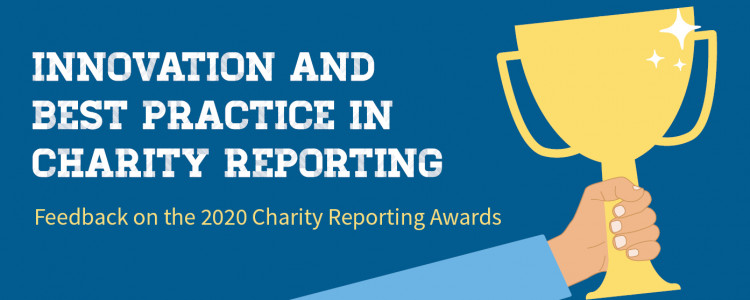Home »
News & Events »
Blog/Rangitaki »
Innovation and best practice in charity reporting - Feedback on the 2020 Charity Reporting Awards

Published 12 November 2020
[![]() 7 minutes to read]
7 minutes to read]
The New Zealand Charity Reporting Awards recognise and celebrate best practice among registered charities in meeting the reporting standards. The awards, now in their third year, are organised by Chartered Accountants Australia and New Zealand (CA ANZ).(external link) The winners and highly commended in the 2020 awards were announced earlier this year.(external link) The calibre of award entries were high and the qualities of transparency and excellence shone through in the winning reports. Dr Cherrie Yang, a judge for the 2020 New Zealand Charity Reporting Awards, provides her reflections on good charity reporting below.
This year, I was appointed to be a judge for the 2020 New Zealand Charity Reporting Awards. It was a fantastic experience and a great opportunity to recognise best reporting practice among registered charities. This year we introduced ‘innovation’ as a new judging category to promote innovation in charity reporting.
But what does best practice in charity reporting look like? Why does innovation in charity reporting matter? In this blog I share my first-hand judging experience and provide some answers to these two questions.
The reporting standards came into effect on 1 April 2015 to ensure that all registered charities prepare their annual reporting in line with a set of standards. The reporting standards, which were set by the External Reporting Board (XRB), encourage greater transparency and consistency among registered charities. To comply with the reporting standards, all registered charities are required to prepare a performance report that contains both financial and non-financial information to tell a holistic story.
Registered charities are categorised into four reporting tiers based on their annual expenses (Tier 1, 2 and 3) or operating payments (Tier 4). Tier 3 and 4 charities, representing the majority (93%) of the New Zealand charitable sector, are relatively small in size and often lack resources and professional support in preparing their performance reports. Hence, meeting reporting requirements presents quite a challenge for some of these smaller charities.
Tier 1 and 2 charities must prepare financial statements based on International Public Sector Accounting Standards. From 2022, they will also need to present service performance information, which Tier 3 and 4 charities have had to do since day one. Before the reporting standards were introduced in 2015, registered charities could provide any information they chose to demonstrate their accountability, which led to concerns about transparency and the limited disclosures of information.
Once the judging panel was convened, we received several shortlisted reports in each of the five categories (four tiers and innovation). Based on three judging criteria, we carefully reviewed each report and scored them to determine both the winner and the highly commended charity in each category. Our criteria were:
1) compliance with standards;
2) communication effectiveness and innovation;
3) overall presentation.
We then sent our scores to the chief judge to consolidate and discussed the final results in a conference call. It was a robust process. I am extremely impressed by all the judges’ efforts in reviewing the charities’ reports in such a short time, despite the significant disruption of COVID-19 in our work and life.

Research suggests that charity stakeholders have strong needs for relevant performance-related information. However, this information is not always disclosed in a way that stakeholders can easily access and understand it. The reporting standards can address this, but four key issues are still evident in current reporting:


My own research with government and philanthropic funders highlights the importance of charities reporting their performance results in creative and innovative ways. Therefore, I am pleased that the ‘innovation’ judging category was introduced this year to encourage innovation in charity reporting. Here I provide some suggestions on how charities can use new or different ways of presenting their performance:
It was a great honour for me to be a part of the New Zealand Charity Reporting Awards this year. I am pleased to find improvements in charity accounting and reporting and I look forward to seeing more innovation and best practice in charity reporting.


Dr Cherrie Yang is a Senior Lecturer in Accounting at Auckland University of Technology. She is passionate about research in the areas of charity accounting and accountability. She has developed a 'Not-for-Profit Accounting and Accountability' course that aims to prepare future Not-for-Profit researchers, leaders and contributors.